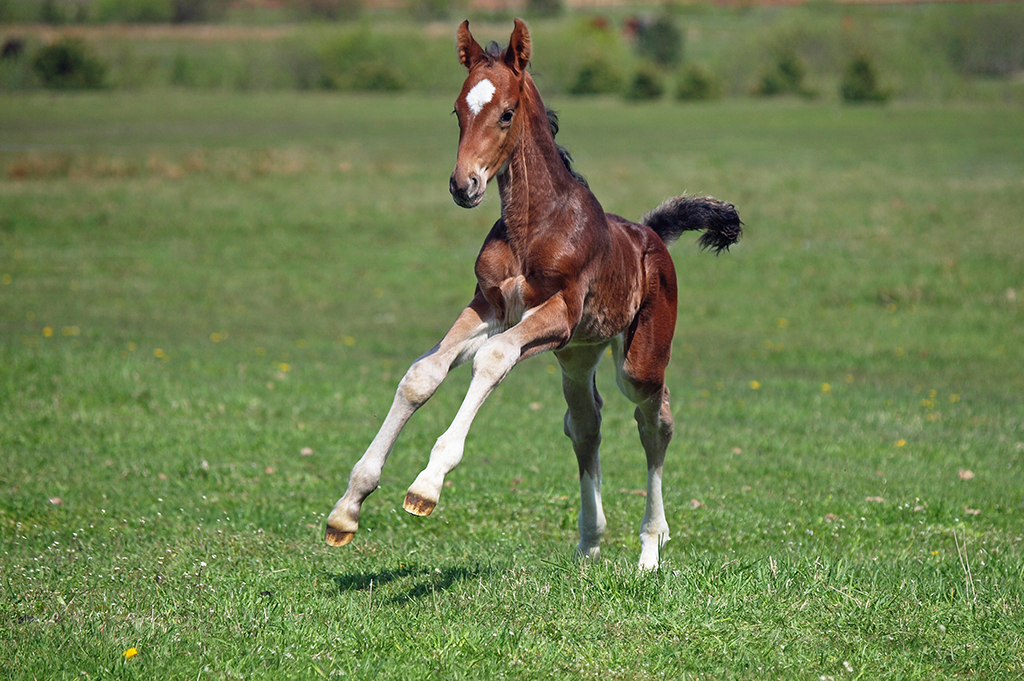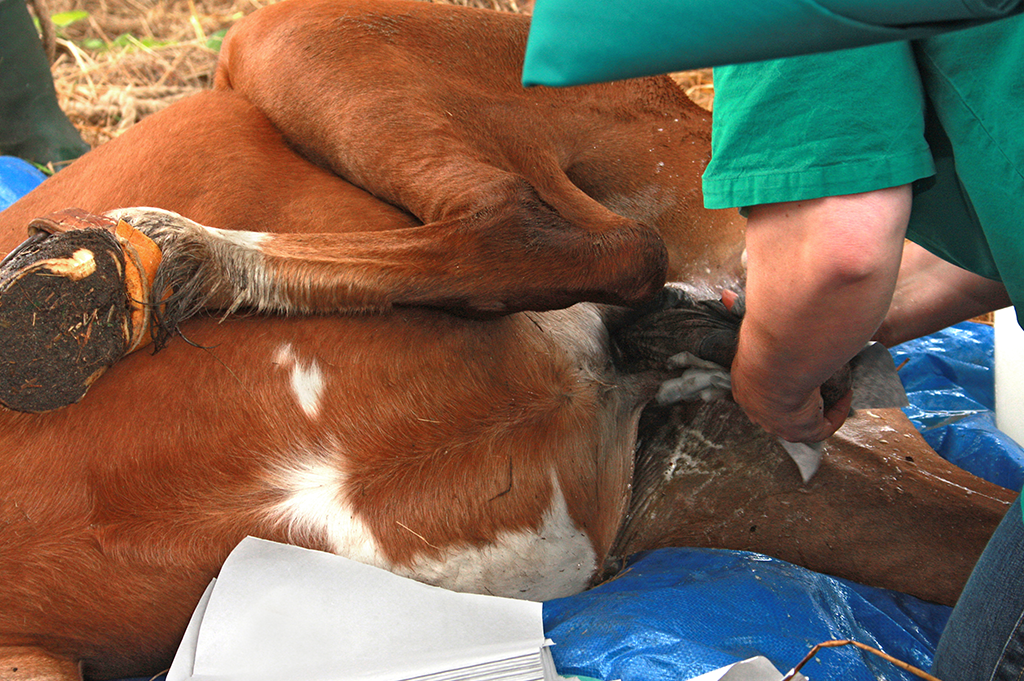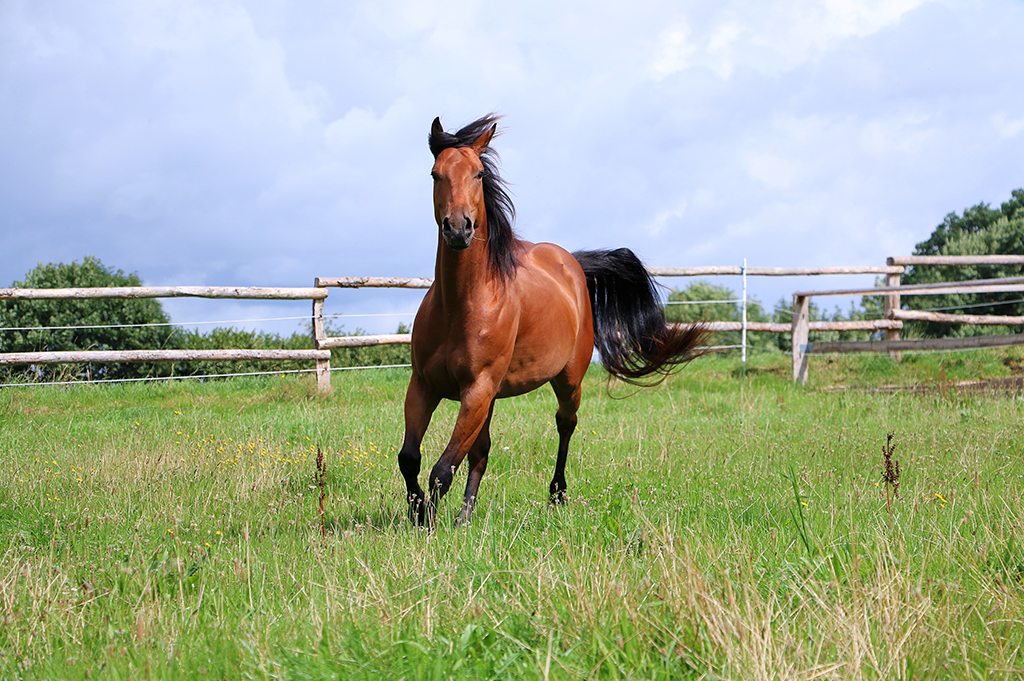Castration* is one of the most common surgeries performed on horses in the UK, with most colts being “gelded” at a young age. We spoke to our horse health expert recently to find out why castration in horses is so commonplace, how the operation is carried out, as well as what aftercare might be required. Read on to find out what they had to say!

Why is castration in horses important?
Stallions (uncastrated horses), can be quite a challenge behaviourally, both all year round, but also especially during mating season. Therefore, owning a stallion can require careful management, and shouldn’t be undertaken lightly. Once castrated, a gelding should have a much more placid temperament, and be easier to control. It’s also important, for horse welfare and breeding standards, that any horse with undesirable character traits or conditions, is castrated to prevent any unintentional breeding.
When is the right time to castrate a horse?
If you’ve just bought a colt and are wondering when you can have him castrated, the procedure can be performed as early as from when they are just a few months old. Spring can be a good season for the operation, as this is before flies start to become troublesome, which could disrupt the healing process. Providing good turnout, with clean pasture, can also help your newly gelded colt to heal during the post-operative phase. You’ll need to make sure your horse’s vaccinations are up to date, especially tetanus.
Cryptorchids and castration in horses
Before castrating a horse, your veterinarian will perform a full clinical examination on the colt, to determine whether the operation is appropriate, as well as the best method to use. One of the things they will look out for is cryptorchids, which is where a colt doesn’t have both testicles present, with one or both being undescended. This is something that’s more common within certain breeds, such as Welsh ponies. If a colt reaches around eight months of age without both testicles descending, they’re unlikely to do so.
Horses with retained testicles shouldn’t be used for breeding to prevent the trait being passed on. They also have an increased risk of developing testicular tumours and other problems.

Techniques for castrating horses
Depending upon the age, temperament and size of your horse, as well as whether they have retained testicles or not, there are different castration methods available.
Open castration
Open castration is a technique normally used for young colts and is performed at home, while they are standing and under sedation. Local anaesthetic is injected into the testicle and surrounding areas, after which the testicle is removed from an incision in the bottom of the scrotum. A clamp, known as an emasculator, is put in place for two to three minutes to make sure any severed blood vessels are sealed. The procedure is then repeated on the other side, with the incisions being left open.
Following on from the operation, after around 24 hours, the horse should be able to be walked out in hand, or turned into a small, clean paddock if it’s deemed appropriate. Controlled exercise can be beneficial in reducing swelling and encouraging drainage of the wound.
Closed castration
If a horse is older or larger, it would usually be recommended that they undergo a procedure known as closed castration. This is performed under full general anaesthetic, in an operating theatre with asepsis, as this will minimise the risk of any complications after the operation. After closed castration, the horse will be limited to restricted exercise for around one week in order to ensure they’re fully healed before getting back to normal.
Laparoscopic castration
In the case of cryptorchids, a laparoscopic technique may be advised. Prior to surgery, ultrasound can be used to locate the undescended testicle. If it’s found to be within the abdominal area, laparoscopy, or key-hole surgery, could be used. This would involve placing a fibre optic camera within the abdomen in order to accurately find the testicle. This would be performed in a sterile, surgical environment.

Aftercare
Post-surgery, many vets will give the horse a tetanus booster, as well as prescribing anti-inflammatories and antibiotics. Close monitoring of the horse is essential post-castration, to make sure there’s no post-operative bleeding or any other complications, such as herniation or infection. The horse’s stable should be kept clean, with fresh bedding, in order to reduce the risk of infection.
If you have a horse that’s about to undergo castration, we hope this information has filled you in on what to expect. Remember to always listen to your vet’s advice, and to follow this once the operation has been completed. If you have any further questions about castration in horses, we would recommend speaking to your vet.
* The Insurance Emporium will not cover horses for any costs arising from your horse being castrated or from cryptorchid castration.
All content provided on this blog is for informational purposes only. We make no representations as to the accuracy or completeness of any information on this site or found by following any link on this site. We will not be liable for any errors or omissions in this information nor for the availability of this information. We will not be liable for any loss, injury or damage arising from the display or use of this information. This policy is subject to change at any time.


